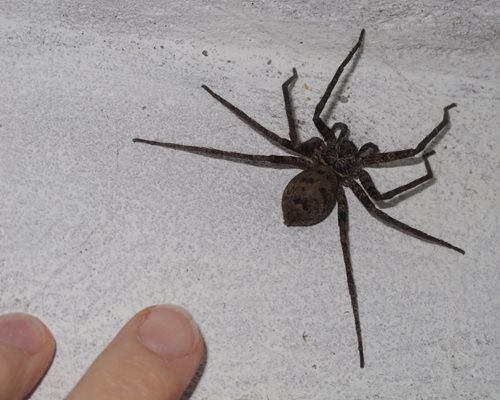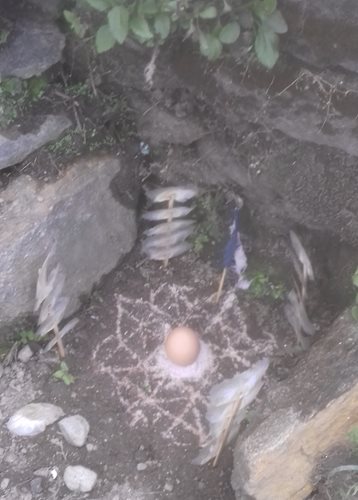Before venturing into the mountains in Nepal, I thought – but only in passing – about the possible hazards I might face. The biggest, undoubtedly, would be driving off the road, as vehicles often do, in this land of steep contours and landslides. I expected to be staying in a proper concrete building – with other
PHASE staff – at around 2000m above sea level so the chances of encountering tropical nasties would be minimal, or so I thought.
The journey from Kathmandu to Bhotang took nine hours. I was warmly welcomed, and given someone else’s bed but the mattress was so thin as to be unworthy of the title. I’m getting too used to the soft life, clearly: I didn’t sleep that well. One night I was aware of something crawling up my bare arm. Bugs don’t spook me generally but I thought I should check what species wanted to climb into my sleeping bag with me. I found my head torch to see a slightly discombobulated harvestman. It set off on a different course off my arm and up the wall while I was thinking how good it was not to have to worry about scorpions.
Next morning as I was organising body and brain I noticed – on the ceiling directly above where my head had been – a beast of astonishing size. An ambush predator big enough to devour lizards and bats. I reckoned (but I didn’t pick it up) that it must have weighed much more than a mouse. I suppose it shouldn’t have been a surprise that this creature was in the family of spiders boasting the largest spans in the world.
I’ve met smaller versions of these giant crab spiders in caves in Nepal where you can actually
hear them scuttling across cave walls.
This one seemed dozy if coy about having her photo taken. When I slid my fingers close – for scale – she ran
onto my bed, which I was less than enthusiastic about. Saraswati came to the rescue though. She encouraged the beast onto a dustpan and put her outside. I asked her if they bite, to which Saraswati responded unhesitatingly, ‘They bite.’ She didn’t elaborate but I knew spider venom kills flesh so bites take a while to heal.
A few days later, returning from visiting patients, the owner of the house where we were staying greeted us with an outpouring of angst. As often happens when people are traumatised I followed very little of what was said in her fast-flowing Nepali but I saw her stretch both arms wide to indicate that something two metres long had been in the loo. It was green. The chances of encountering a properly venomous snake in the hills are small; the commonest species are the so-called rat snakes which harm no-one, but still upset people a great deal.
Next morning at dawn, I woke to low chanting and went out to see a lama squatting close to the loo, burning incense and murmuring incantations. Only later did I see he’d built a scene with slivers of bamboo threaded through giant winged seeds and fashioned a scrap of cloth on another sliver to resemble a miniature prayer flag. He had created a tiny square. Inside the square he’d marked a network of geometric patterns with powder (probably ground millet) and there was a hen’s egg in the middle.
The neighbour explained this was a nag puja – to keep snakes away.
 |
| A giant crab spider of astonishing size was on the ceiling above my bed |
 |
| The lama made this square and chanted his nag puja to keep away snakes |